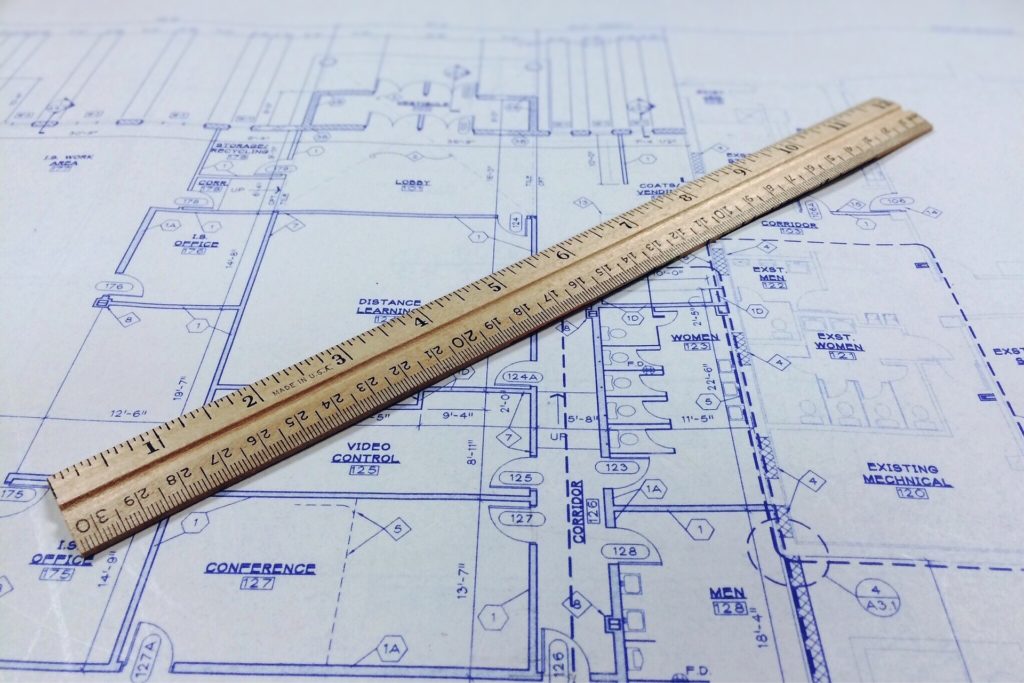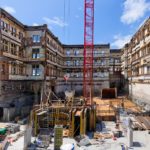In my previous post I noted that current trends away from religious affiliation, together with cultural shifts in identity and community, leave us needing to experiment with new forms of Christian belonging; with fresh articulations of Christian belief; with alternative embodiments of Christian behaviour. And all of this within a more positive orientation to the these cultural shifts—an affirmation that in them God is at work doing something good, right, and beautiful.
In this post I offer a metaphor for framing this (re)new(ed) Christian engagement. What if we imagined Christianity as a blueprint for certain kinds of houses? This idea came to me in a conversation a few days ago with a member of our Jesus-shalom community and it seemed worth exploring. Today I’ll offer and elaborate on the metaphor. In the next post I’ll say a bit about what that might mean for the kinds of faith journeys we are encouraging on this site.
First, some autobiographical background.
During my high school and university years, I worked a number of summers building houses. One summer I was even fortunate enough to work on one particular house from foundation to finish: I helped dig the hole and pour the concrete; I stained the trim and helped install the carpets; and I did a fair bit of other things in between (framing and drywall, roofing and shingling, doors and windows). The main things I didn’t do were plumbing and electrical.
Sometimes the homes we built were customized, done from a blueprint that a homeowner helped shape. At other times we built “on spec,” meaning we built according to a more-or-less standard design, producing a ready-to-move-in home, and “speculating” that we would find a buyer.
All of these houses were built in planned neighbourhoods, what we called “subdivisions,” real estate developments in the spaces between city and farmland. And these subdivision neighbourhoods typically included both custom and spec houses, the latter often showing up in side-by-side rows, as slightly modified copies of one another.
But whether customized or spec, the blueprints always had many similar elements and features—they prescribed rectangular structures with triangular roofs (on the outside), and multiple interior rooms (almost always including separate kitchens, living rooms/lounges, and bedrooms) on the inside, with limited but secure egress between interior and exterior. The result, then, was a set of homes that had deep similarities with one another, although differing, to various degrees, in external appearance and internal arrangement.
Many years later I did have an occasion to dabble in plumbing and electrical, when my wife and I bought (with friends) a 110 year-old building, which needed to be structurally renovated and restored prior to moving in, and then redeveloped and redesigned after moving in—we knocked out walls, created new rooms, put in new doorways, and (here it is!) rewired the electrical and adjusted some plumbing.
Although our Chicago home does not sit next to other homes like it, there are similar homes down the street that are similar in their design. And throughout Chicago are whole neighbourhoods that have old homes (by American standards!), quite similar in their design, sitting side-by-side. In other words, a typical Chicago neighbourhood, much like a more recent subdivision, would display an array of houses with a deeply similar conceptual design, and a “family resemblance” among the external and internal variations. However, when one of these homes undergoes some do-it-yourself modifications, its interior can be different than one might expect when viewing it from the outside. Indeed, even the outside appearance of the home can be significantly altered.
So, back to the metaphor: what if we were to think of Christianity as a kind of blueprint for homes? What if—extending the metaphor—we were to think of our broader cultural shifts in identity and community as changes in the neighbourhood, or the constituency, or the climate for those homes? And if these changes are happening, what kind of Christian blueprint do we envision? Can we imagine something more than “spec” building or familiar “renovation”?
In my next post I’ll provide a Jesus-shalom kind of answer to these questions.






